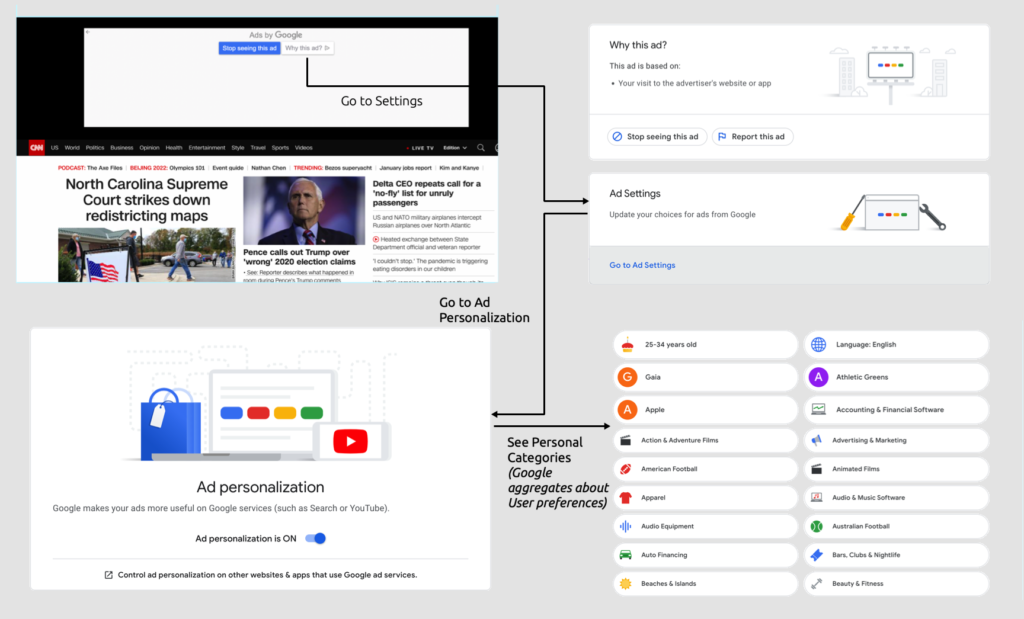
Privacy Advertising: Googles FLoc to Topics, a Perspective from Responsive Ads
By Matthew Snyder
2022 is becoming the year of privacy-based advertising.
Over the last year, the entire advertising industry from buyer to the seller has been in somewhat of a panic mode as the 3rd party cookie is being deprecated and Google announced its rollout of FloC (Federated Learning of Cohorts). No matter how the industry was getting adjusted to this new paradigm, clustering users by cohorts in many ways became to be known as a way Google could get more control over the market. Its strength with Privacy Sandbox via Chrome to Android, and GAM was so inextricably linked by defining these groups and then letting everybody use them was the potential gateway of the flow of all media dollars down the flow for buyers to end-user. From Publisher on one end supplying audiences inadvertently into FLoC’s and on the other Agency and Brands buying into the FLoc’s was one way to streamline the conversations around privacy but how it would like to all publishers and brands 1st party data stacks was still evolving. However as we entered 2022, Google revealed it would ramp down FLoC toward a new more user-focused solution of TOPICS.
This is a very big shift in the overall strategy of Google. They have primarily been known for the “magic” of Google’s special sauce to find the right person at the right place at the right time and their own evolved Responsive Display Ads and Responsive Search Ads ( please note that ResponsiveAds pre-dated Google) products using machine learning with the artificial intelligence second to now. If you go and check out why ads are being targeted to you, Google has slowly behind the scenes has been accumulating hoards of data on individuals that you can see for yourself.

Not that Google has amassed a ton of data and insights on the user— how to get the user to come on board with a bit more control?
We see this as a game-changer as it indicates Google is moving away from being the sole party in control of targeting, but rather the arbitrator of the TOPICS with a more user-centric approach to advertising where the users have a sort of control of their TOPICS. There are a lot of questions, such as what happens when users do not opt-in for their TOPICS and the overall ownership and sharing of TOPICS and the users bread-crumb of their TOPICS how the data moves from Publisher to Publisher or Advertiser to Advertiser.
[Introduction to Topics– Video by Google ]
Over the last couple of years, there has been a movement by some of the leading players— Namely Apple to take more of a user-centric approach vs. the advertiser or business-centric approach.
Quoting an article from Business Insider, “Facebook stands to lose $10 billion this year due to a change Apple made to the iPhone. Last May, Apple added a function to the iPhone to stop brands from tracking you across apps. Most users opted out of tracking, which is having a major impact on Facebook’s bottom line.”

The significance here is it might be the turning point where Apple led the charge to put a stake in the ground on a User-first/User-centric approach to overall advertising. Apple does not play the same game as Google in the business as the same level mediary of media dollars from buyer to seller, but the fact that Google has now pivoted to acknowledge what Apple is doing and it is going to be interesting what launches this year in the combination of Chrome, Android and Google services for users to better opt-in and select their topics.
The philosophy of user-centric advertising is the foundation of ResponsiveAds values and the long-term vision of our products and services. Making ads more relevant by the user opting in to the Topics they enjoy and being a creative platform that can connect to those services as well as continue on our integration path with partners like Google and Apple with a focus on giving creators the ability to build and deploy more engaging, interactive experiences that users love is something we will continue to work to achieve.
This will be a long-journey, but it is clear that 2022 seems to be the year that this is the turning point now for the industry.
Related posts



